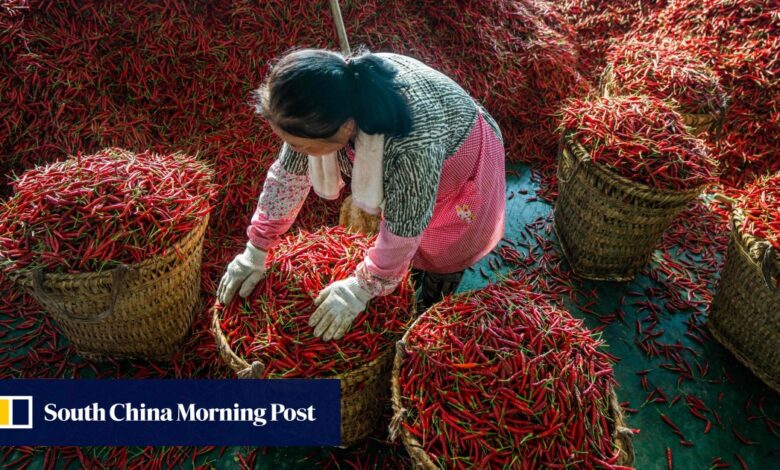China GDP: annual forecasts cut to below Beijing’s target due to weak exports, property crisis

[ad_1]

At least six international financial institutions have lowered their annual growth forecasts for China’s economy this year to below the government’s target due to falling export demand and a stubborn property crisis.
But some institutions have downgraded forecasts from early 2023 or late last year, with a low of 4.5 per cent.
The outlooks by the likes of Barclays, JPMorgan Chase and UBS, which reflect the expectations of many overseas investors, present a challenge for the world’s second-largest economy despite Beijing’s upbeat talk about market sentiment.
“Largely due to a weaker property sector with little additional offset, but also foreseeing softer external demand, we downgrade China’s [gross domestic product] growth forecasts to 4.8 per cent for 2023 and 4.2 per cent for 2024,” UBS said last month.
Its economic health affects confidence among the world’s multinationals, sets the beat for global manufacturing and ripples into developing economies that rely on Chinese trade and inbound investment.
At the end of last month, Beijing introduced a raft of stimulus measures to stoke household consumption, rescue the property market and also stabilise the yuan.
‘Momentum remains lukewarm’: 4 takeaways from China’s trade data in August
‘Momentum remains lukewarm’: 4 takeaways from China’s trade data in August
The official Xinhua News Agency said last week that growth of around 5 per cent “is achievable despite external uncertainties”.
And at least eight institutions, including Goldman Sachs, the International Monetary Fund and Oxford Economics, are still predicting growth of 5 per cent or higher this year.
The war in Ukraine, aftershocks from the coronavirus, inflation and interest rates have all contributed to the weak demand.
A high interest rate environment in the world that has not recovered from Covid and also suffers from the shock of the Ukraine war means weak global demand
“A high interest rate environment in the world that has not recovered from Covid and also suffers from the shock of the Ukraine war means weak global demand,” said Edwin Lai, director of the Centre for Economic Development at Hong Kong University of Science and Technology.
Many forecasters said China’s property market troubles will weigh on 2023 growth, with the US$42.7 trillion real estate sector having been under pressure since officials began tightening credit rules to guard against speculation in 2017.
“In June we expected 5.2 per cent growth [this year], but given the renewed property sector weakness, slowing consumption and limited macroeconomic stimulus, the outlook has deteriorated,” a spokeswoman for S&P Global Ratings said last week.
China shelves US-like property tax to save likes of Evergrande, shore up growth
China shelves US-like property tax to save likes of Evergrande, shore up growth
S&P, though, has not updated its forecast of 5.2 per cent, backed by an A+ “stable” rating.
More stimulus for the property sector is likely, some analysts said.
“[Stimulus] should go some way to boosting sentiment and support our view that growth should gain momentum in the fourth quarter,” said Sheena Yue, a China economist with Capital Economics.
China’s economy will grow by 5 per cent this year, she added.
[ad_2]
Source link





